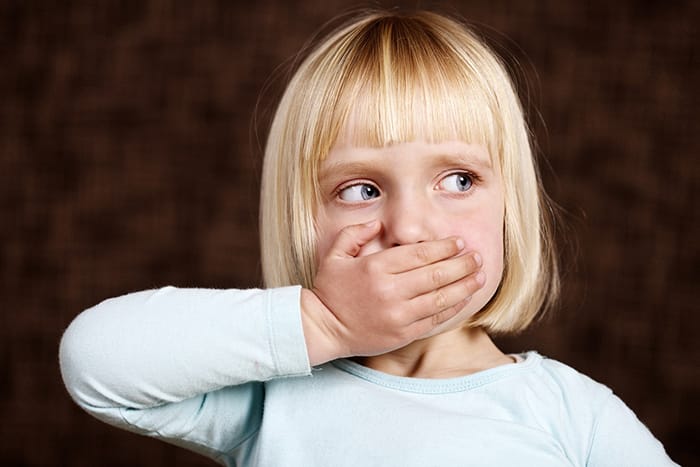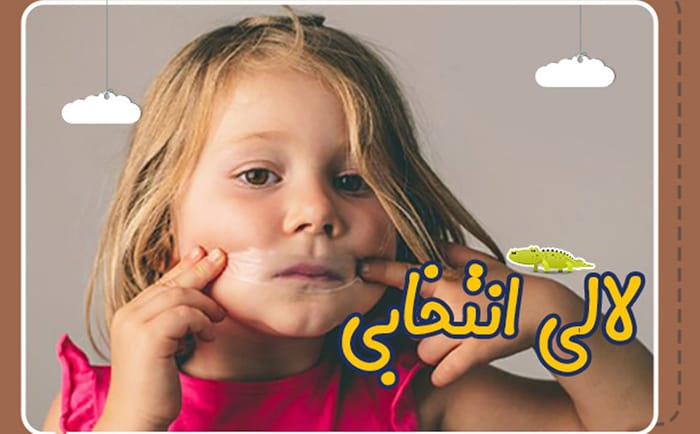Having selective mutism means that certain social situations cause too much fear or anxiety, making it difficult or impossible for the person to speak. This anxiety disorder usually begins in childhood, but its effects can last a lifetime. Early detection and treatment of this condition can speed up the treatment process.
Selective mutism in children can affect their performance in school, socializing, and making friends. It can also cause children to avoid talking even when it is important. If a person has selective mutism in adulthood, it can continue to have negative effects. Selective mutism can prevent a person from making friends or forming relationships (social, work, romantic, etc.) and can also affect a person’s performance at school or work.
What is a Selective mutism?
Selective mutism (SM) is a mental health condition in which a person is unable to speak in certain situations due to fear or anxiety. This disorder usually affects young children, but it can also affect teenagers and adults. Selective mutism is considered an anxiety disorder and can overlap with other anxiety-related symptoms, affecting a person’s life in the long term.
How common is Selective mutism?
Selective mutism (SM) is relatively rare, affecting less than 1% of people in all age groups. It typically starts in childhood around the age of 5 and is often observed when a child begins preschool, kindergarten, or elementary school. While it is less common in teenagers and adults, it is still possible to have this disorder. SM seems to affect women about twice as often as men.

What are the symptoms of Selective mutism?
The term “selective” in the name of this disorder implies that it only occurs in specific situations (it’s important to note that not speaking is not a deliberate choice). A person with Selective Mutism (SM) can speak without any difficulty in comfortable and appropriate situations. However, they consistently find it challenging or impossible to speak in uncomfortable situations
Some individuals may experience difficulty speaking, either due to feeling overwhelmed or paralyzed by fear and anxiety. This can manifest as a reluctance to engage in verbal communication, avoiding eye contact, or withdrawing from social interactions. You may think that the person refuses to speak, but it is an “autopilot” response rather than a deliberate choice. Nonverbal communication, such as using audible sounds in place of words (e.g. “uh-uh” for “no” and “uh-huh” for “yes”), writing responses, pointing to items in a book, Using other gestures (such as facial expressions, pointing, miming, or nodding) instead of words, Using one-word answers or short-term sentences. Stuttering or mumbling, changing voice ( a robot-like voice or changing natural pitch and tone) may be preferred as an alternative to speaking.
What causes Selective mutism?
Experts are unable to fully explain why selective mutism (SM) occurs. However, they suspect that several possible factors may cause or contribute to it. Selective mutism is strongly associated with other mental health conditions. While these conditions are not necessarily the cause, they are more likely to occur in people with SM. These conditions include:”
Social anxiety disorder.
This disorder is very common in people with selective muteness. Experts estimate that 75% to 100% of people with SM also have it.
- Phobias
- Other anxiety disorders
- Autism spectrum disorder
- Separation anxiety disorder
- Post Traumatic Stress Disorder (PTSD)
Family history or genetics
Anxiety disorders can be hereditary. Individuals with selective mutism are much more likely to have a first-degree relative with selective mutism or other anxiety disorders.
Other communication disorders
Some children develop selective mutism (SM) because of anxiety related to speaking or fear of not understanding what others are saying, such as auditory processing disorders or learning delays. Speech disorders, such as stuttering or other mental disorders, can also contribute to the development of SM in children. Additionally, some children may develop SM due to feeling anxious about their voice.
Social situation
Children who have certain factors or social conditions are more susceptible to selective mutism (SM), such as being bullied, experiencing traumatic events or abuse, facing family problems like emotional, verbal, or physical violence at home, or moving to a place with a different language.

How is Selective mutism diagnosed?
Typically, selective mutism (SM) is diagnosed by a mental health provider, such as a psychiatrist or psychologist, although other professionals like speech-language pathologists or speech therapists may also contribute to the diagnosis of related conditions. The mental health provider determines the diagnosis based on symptoms and behavior, by asking questions about the individual’s experiences and other factors that may have contributed to the condition.
the person’s therapist usually uses screening questionnaires, checklists, or other tools to help determine whether the person meets the criteria. The American Psychiatric Association’s Diagnostic and Statistical Manual of Mental Disorders, fifth edition (often referred to as “DSM-5R”) has five criteria that must be met to receive a diagnosis of sm:
- The individual consistently remains silent in social situations where speaking is expected but experiences no difficulty in speaking in other contexts.
- Not talking can have a significant impact on a person’s lifestyle, education, and job.
- The inability to speak lasts for more than a month.
- Not speaking does not necessarily mean having difficulty speaking or understanding other people’s language.
- A person’s difficulty speaking is not due to another communication disorder such as autism or schizophrenia spectrum disorders.
How is selective mutism treated?
it is possible to reduce the severity and frequency of symptoms with proper treatment. Early diagnosis and treatment may even lead to complete remission of symptoms. The most common treatment approaches include:
Mental health treatment, especially cognitive behavioral therapy (CBT), is typically the initial option and the most effective in addressing selective mutism (SM) symptoms. Behavioral therapy can assist in understanding and managing anxiety and other challenging emotions associated with SM. Additionally, it can help address tantrums and other destructive behaviors that may accompany SM.”
Speech Therapy
Speech therapy involves working with a speech therapist or other health care professional. It can be useful when SM occurs with speech disorders.
Medicines
Medications can be part of SM treatment, especially if mental health or speech therapy isn’t effective on its own. The most common drugs used to treat SM are selective serotonin reuptake inhibitors (SSRIs). These drugs primarily treat depression but can also treat anxiety-related disorders, including SM.

Side effects of drugs
Health care providers are the best source of information about the possible side effects and complications of the drug(s) they are taking, and what the patient can do to minimize these side effects.
Is there a way to prevent selective mutism or reduce the risk of its occurrence?
Selective mutism is not preventable, and experts are unsure about the factors that contribute to it or how to reduce its likelihood.
How long does selective mutism last?
For many people, symptoms appear to disappear by adulthood. While symptoms may still be present, they tend to change and become more similar to other anxiety disorders, especially social anxiety disorder.
For many people, symptoms seem to disappear by adulthood. Symptoms may still be present, but they change and become more like another anxiety disorder, especially social anxiety disorder.

